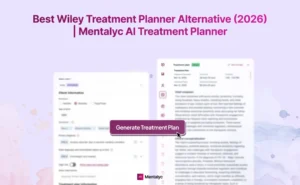Treatment plan for OCD (Obsessive-Compulsive Disorder) involves understanding the amount of impact the obsessions and compulsions have on a person’s life. It is often a debilitating mental health concern with a pervasive effect on many aspects of human life. It shows up in different ways and in different degrees. Therefore, there is no one-treatment-that-fits-all, there is no right amount of time that it takes and there is no one single type of intervention that would fit.
Understanding the impact also comes along with understanding why a behaviour shows up in a certain way, what the behaviour protects. It involves seeing beyond OCD, it involves seeing the client as separate from the problem.
According to DSM-5, OCD is characterized by the presence of obsessions and/or compulsions (OCD UK, n.a). Obsessions are intrusive thoughts, images or urges that are unwanted and create distressing feelings. Compulsions are behaviours, sort of rituals that people undertake in order to get rid of the obsession and/or decrease the amount of distress (International OCD Foundation, n.a). Previously listed as a part of the ‘Anxiety Disorders’, OCD is now classified as a disorder under the group of ‘Obsessive-Compulsive and Related Disorders’.
Core Elements of a Treatment Plan for OCD
An ideal OCD treatment plan would involve:
- Short-term and long-term goals
- Session-specific interventions
- A tailored approach from one or multiple therapeutic schools
- Customization based on client needs and history
- Collaboration with family and other mental health professionals
- Compassion, flexibility, and attention to the client’s emotional state
- Awareness of comorbidities
It is both structured and dynamic, designed with clear intent but ready to evolve as the client grows.
Treatment Plan for OCD: Goals and Objectives
The overall goals of OCD treatment may include:
- Reducing the frequency and intensity of obsessions and compulsions
- Helping the client tolerate distress without resorting to rituals
- Improving daily functioning and interpersonal relationships
- Increasing self-awareness and emotional regulation
- Developing healthy coping skills
- Preventing relapse and building long-term resilience
Objectives are more specific and session-linked, e.g., “Client will use a mindfulness technique when intrusive thoughts arise,” or “Client will delay ritual by 10 minutes.”
OCD Treatment Planning for Children
When treating Obsessive-Compulsive Disorder in children, the core principles of evidence-based treatment remain similar to adult, especially the use of CBT with Exposure and Response Prevention (ERP), but the approach must be adapted to fit a child’s developmental level, emotional maturity, and family context.
Key Considerations for Children:
- Psychoeducation must be age-appropriate. Using metaphors (e.g., calling OCD the “Worry Monster” or “OCD Bully”) helps children externalize the disorder, which can reduce shame and fear.
- Parental Involvement is crucial. Parents need guidance to reduce accommodation behaviors (like providing reassurance or helping avoid triggers) and instead support exposure efforts.
- Creative and Play-Based ERP: Therapists can embed exposure tasks into games, storytelling, or art activities to make them less intimidating.
- Behavioural Rewards & Visual Aids: Using token systems, charts, or stickers can reinforce brave behaviour and track progress in a tangible, motivating way.
- School Collaboration: Teachers and school counselors can be involved in creating consistent responses to compulsions that occur in school, and in supporting exposure practice in that environment.
Therapists should also screen for co-occurring conditions like anxiety, ADHD, or learning differences, which are common in children with OCD and can affect treatment adherence and planning.
Evidence-Based Approaches for Treating OCD
Both CBT and ERP are considered gold-standard treatments for OCD. CBT helps identify and restructure irrational beliefs tied to obsessions and compulsions.
ERP involves gradual, repeated exposure to anxiety-provoking stimuli while refraining from the compulsive behavior, helping desensitize the client over time.
Additional evidence-based techniques include:
- Acceptance and Commitment Therapy (ACT)
- Mindfulness-Based CBT
- Family-Based CBT (especially for children and adolescents)
- Pharmacotherapy (SSRIs) under psychiatric supervision
Both standalone and combined approaches can be effective depending on the severity and context.
Sample OCD Treatment Plan (with Goals & Interventions)
According to the International OCD Foundation, CBT (Cognitive Behaviour Therapy) is the best evidence based treatment for OCD. This can be given with or without medical support. A sample treatment plan is listed below, with each session to be held for an hour, and assuming 2 sessions are held every week. It is also assumed that the client has been clinically diagnosed with OCD. This treatment plan can be subjected to change in type of psychotherapy and school of thought, and can be followed online or offline.
WEEK 1
Sessions 1 and 2:
- If the client is new to therapy, an explanation of the process is given, while explaining ethics and confidentiality.
- A Rogerian model is used for this- unconditional positive regard, belief in potential of the client to seek the best for themselves. This is to relax the client and hold space for them through any emotion they feel.
- The counsellor is to be authentic, non-judgemental and open to the client in order for the client to let go of any shame while discussing their issues. The nature of the counsellor during the session sets the tone of the therapeutic relationship, which in turn affects how much therapy can help the client.
- A case history is to be built- from basic demographic details of the client, family history to the duration, impact, effect and affect of the disorder. A detailed case history provides much information regarding how the disorder emerged, an idea of how the client feels about it, how the immediate environment looks at it. Medical and Psychological history of the client also helps formulate the treatment plan- to include or rule out specifics.
- Contact of a family member that the client trusts can be given so that the counsellor is able to discuss and bring changes at home if necessary. Contacting family members is done with the knowledge of the client.
- Room for spontaneity is to be kept, and care should be taken to not make the client feel restless and intimidated. The counsellor should be present with the client.
- Goals for the therapeutic sessions are tentatively set.
WEEK 2
Session 3 and 4
- These sessions focus on collecting information regarding how the obsessions and compulsions show up. The counsellor relates them to the events of the client’s life, and tries to establish a pattern of thought, feelings and action for the same.
- Psychoeducation regarding how OCD shows up in the client, the A-B-C model is taught to the client. The A-B-C model is Activating Event- Belief-Consequence, which helps the client uncover irrationality behind their obsessions and compulsions.
- CBT as a therapeutic process is explained.
- Homework regarding monitoring obsessions and compulsions is given. These can be linked to them during the therapy session with the ABC model, or can be done by the client by themselves. Communication with the Clinical Psychologist or Psychiatrist (if any) is established by session 3 (Mental Health Professionals (MHPs)).
WEEK 3
Session 5 and 6
- Discussion of homework is done. Exploration of patterns, what the client feels after the ritual (compulsion to perform a particular behavior to alleviate distress from obsessions), the need for the ritual and what else the client could do.
- The client is encouraged to not give into the ritual and stay with the distress created by the obsession.This challenges the client’s belief regarding need for the ritual, as well as irrational beliefs regarding the obsession.
- Communication is maintained with other MHPs.
This can also be done by exploring if there were times that the client did not give into rituals, what helped then, or if there were times when the urge to do a ritual was lesser. The factors crucial for that can be explored and replicated if possible.
WEEK 4
Session 7 and 8
- The homework continues, and how the client felt with the distress is explored. Mindfulness and grounding techniques are given.
- Exposure and Response Prevention (ERP) can be used. This is where the stimulus that creates distress is introduced in increasing degrees so that the exposure helps reduce reaction. Systematic Desensitisation can be used.
- One of the types of ERP, Systematic Desensitization involves the client listing down in ascending hierarchy stimuli that create anxiety and distress. These are ranked from least to most anxiety and distress inducing.
- The client is either asked to visualise or is presented with the least anxiety inducing stimuli, and is given mindfulness and grounding techniques to cope with the distress. This continues in the house as well, after consent for discussion and meeting with the given family member.
- Apart from mindfulness based techniques, the counsellor and client can make a toolkit of things and activities that reduce anxiety, distress and ground the client.
- Communication is maintained with other MHPs.
WEEK 5
Session 9 and 10
- The homework continues, and the increasingly higher ranking stimuli are used.
- Family is educated (by week 3 or 4), and feedback is sought from them.
- CBT based worksheets are given to further aid the process.
WEEK 6-8
Session 11-16
- Stimuli with higher ranks are increasingly used alternatively with mindfulness and grounding techniques.
- Progress is tracked through homework, and the client is asked to increasingly stop more rituals.
- Based on communication with other MHPs, sessions can be tapered off to one per week. This also depends on communication with the family members.
- At any point during these sessions, sessions can be tapered off.
Termination Week
- After tapering off, the last session can be held, terminating the sessions when the counsellor and client feel like the latter would be able to handle the distress and not want to indulge in compulsions.
- This can also be seen through change in how the client perceives the self- self confidence and self esteem can also be improved through other therapeutic interventions, especially removing the person from the problem (OCD) and viewing themselves as more than a person with OCD.
- The counsellor can communicate to the client that they can reach out to the former whenever they need, and chart out how much progress the client has made, equipping the client with a sense of self worth and independence- they can deal with the distress that arises from this, and more.
Tracking Progress in OCD Treatment
Progress is tracked through:
- Homework review (ritual tracking, ERP exercises, distress levels)
- Self-report scales and therapist notes
- Family feedback
- Reduction in frequency/intensity of compulsions
- Increased distress tolerance and behavioral flexibility
Tapering off sessions and gradually increasing independence are also indicators of positive progress.
Modifying the Plan Based on Client Response
The treatment plan is flexible. If distress levels rise significantly or if ERP is not tolerated well, sessions may need to slow down or shift.
If the client shows faster-than-expected progress, goals can be updated to focus on deeper self-awareness, self-esteem, and post-recovery growth.
Therapist responsiveness and collaborative re-evaluation are key.
Documenting OCD Treatment in Progress Notes
Accurate and clear documentation is vital in OCD treatment for monitoring progress, supporting multidisciplinary collaboration, and ensuring continuity of care. Effective progress notes should include:
- Session Goals & Content: What was the focus of the session (e.g., ERP, identifying triggers, mindfulness)?
- Client Presentation: Affect, behavior, motivation, or any shifts in mood and engagement.
- Client Insights or Challenges: New understanding about OCD patterns, difficulties in implementing homework, or emotional breakthroughs.
- Interventions Used: Techniques employed (e.g., CBT thought records, systematic desensitization), and how the client responded.
- Homework Assigned & Feedback: Was homework completed? What did the client report about it?
- Plan for Next Session: Proposed interventions or continuation of current goals.
To streamline this process and enhance clinical efficiency, therapists can consider using AI-powered documentation tools like Mentalyc. We offer automated progress note generation based on session transcripts or clinician inputs, reducing administrative burden while ensuring quality and compliance. Features include SOAP note formatting, custom templates for different therapy modalities, and data insights that help visualize client progress over time. It also ensures client confidentiality with HIPAA-compliant systems.
Conclusion
Whether you’re working with a child or an adult, a thoughtful, individualised treatment plan rooted in evidence-based approaches like CBT and ERP is essential. However, it’s equally important to adapt this plan to the person’s age, cultural background, comorbidities, and readiness for change.
Ultimately, the goal is not to eliminate all obsessions and compulsions immediately, but to empower clients to reclaim agency over their lives—to live more freely, with less fear and avoidance. A good treatment plan does just that: it holds space for discomfort, provides structure for growth, and helps both the therapist and client navigate the challenges of OCD together with clarity and compassion.
References
OCD UK. (2013). Diagnostic and Statistical Manual of Mental Disorders and OCD | OCD-UK.
International OCD Foundation. (2023). What is OCD? International OCD Foundation.
Martín-Vázquez, M.-J. (2014). Cognitive-Behavior and Narrative Therapy in Obsessive- Compulsive Disorder.
lekhbajaj. (2024, November 19). ERP Treatment for OCD | Effective OCD Therapy in India. Coach for Mind.
Why other mental health professionals love Mentalyc

“Do yourself a favor, make your life easier. Use the tools that are readily available … I found Mentalyc to be one of the best tools that I’ve ever used.”
Licensed Marriage and Family Therapist

“It immediately changed my quality of life, personally and professionally. I went from 3–4 hours a week of notes to 1 hour at most … that alone is invaluable personally and professionally.”
Owner/Independently Licensed Marriage & Family Therapist (LMFT)

“If I were recommending this software to a colleague, I would tell them that it is the best thing that they could do for their practice.”
Licensed Professional Counselor

“For those who have hesitations … It is a lifesaver. It will change your life and you have more time to be present with your patients.”
Licensed Clinical Social Worker







